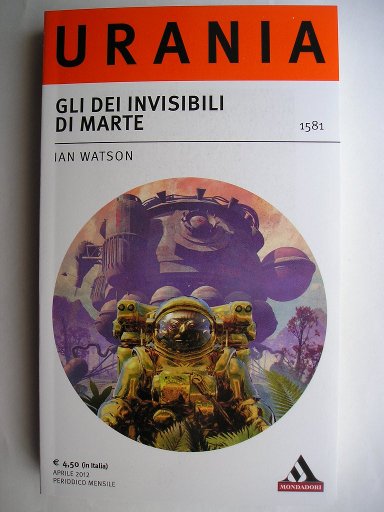
The novel “The Martian Inca” by Ian Watson was published for the first time in 1977.
A Russian space probe that took samples of Martian soil is returning to Earth but crashes in the Andes. The Bolivian villagers near the impact area are infected by a mysterious agent that causes them to enter a state similar to coma. Every type of treatment proves unsuccessful, leading to the patients’ deaths but two of the people infected are hidden from the doctors and after a few days they wake up spontaneously but something in them has changed. They belong to the Quechua ethnicity and start a plan that aims to restore the Inca empire.
An American spaceship is traveling to Mars when the news comes of the Russian probe’s crash and its consequences. There’s no definitive proof that the agent that struck the inhabitants of the Bolivian village is of Martian origin but it’s clear that on the red planet there’s a potential danger to the astronauts. Will it be possible to start the planned terraforming project?
“The Martian Inca” develops in two parallel stories: one in Bolivia with the new Incas trying to restore the old empire and another concerning the American astronauts on their journey to Mars. These two stories are separate but are connected by the mysterious Martian agent that is brought to Earth by a Russian probe and obviously represents a danger to the astronauts who are reaching Mars.
In the story set in Bolivia, the people who survived the contamination undergo a mental metamorphosis, they self-proclaim new Incas and become the leaders of a new Quechua revolution which aims to revive the ancient empire. Those good old days however exist only in the transformed minds of the new Incas and their greatest supporters.
This is the most ambitious part of the “The Martian Inca”, with the mysticism of the people transformed by the Martian contamination and Bolivia’s political problems, which are the focus of various considerations about the international political situation.
Honestly, I found this part overall rather disappointing. In my opinion, it needed higher depth to be really good but as it was written it seems to me rather dull. Perhaps it’s my problem because I see that the elements of inner transformation associated with mysticism and the politics in this plot of “The Martian Inca” are similar to those found in “Dune” but in Frank Herbert‘s masterpiece they’re developed far more deeply.
To me, the plot concerning the astronauts traveling to Mars could work on its own, in an separate work. During their approach to the red planet, Ian Watson slowly allows us get to know those men’s personalities. We’d expect them to be perfect and mentally very stable, instead they have complex personalities with hidden faces in some cases quite disturbing.
Sometimes, those astronauts have peculiar ideas and bizarre thoughts and because their contacts with the Earth are more and more limited by the distance they spend much time immersed in their inner monologues. This could make this storyline boring, luckily it ends up being overall the most fun.
The base topic of both plots of “The Martian Inca” is a possible encounter between humans and a really alien Martian life form. Could it be a benefit to mankind? Frankly, humans after metamorphosis don’t seem anything special and not all that different from normal ones. This for me is another reason for disappointment because I expected more interesting changes.
In case you didn’t get it, to me “The Martian Inca” seemed overall quite dull and disappointing. In the past I read other novels by Ian Watson, who usually manages to bring together various topics, including cliches, to create an intriguing story. There was potential in this novel too but in my opinion not the result.


Permalink